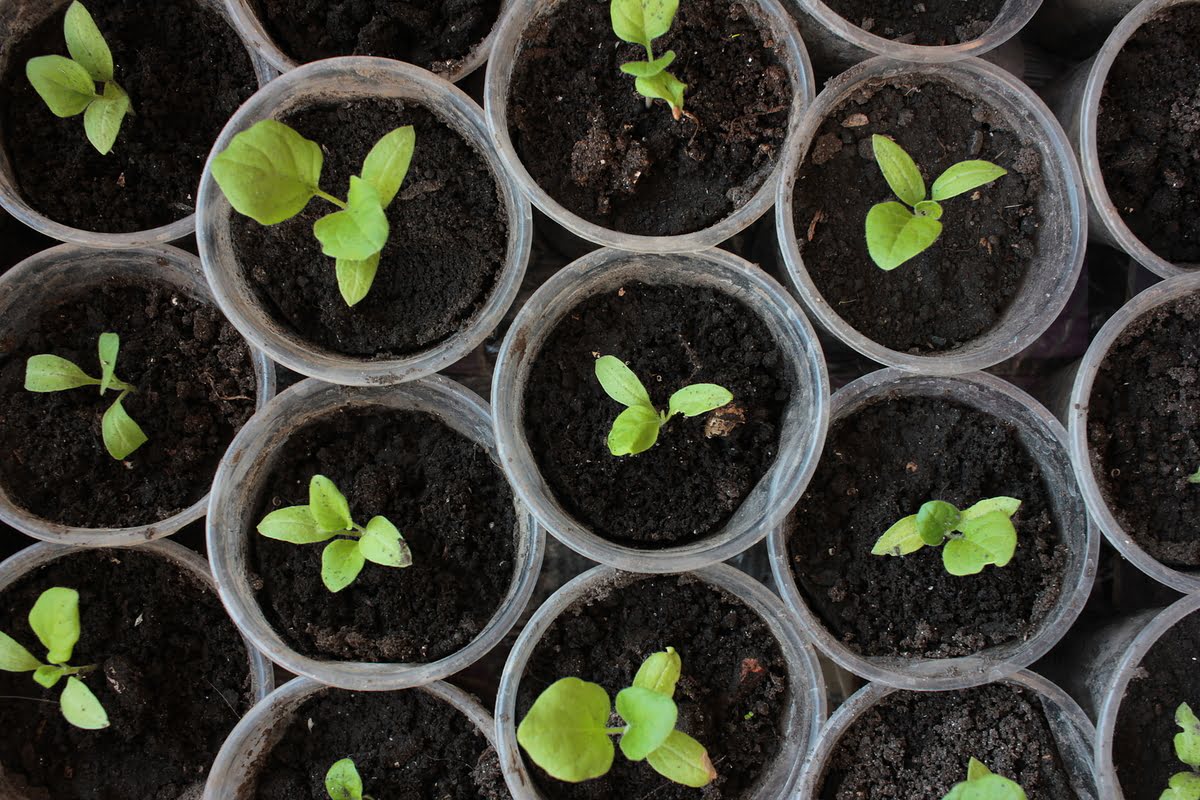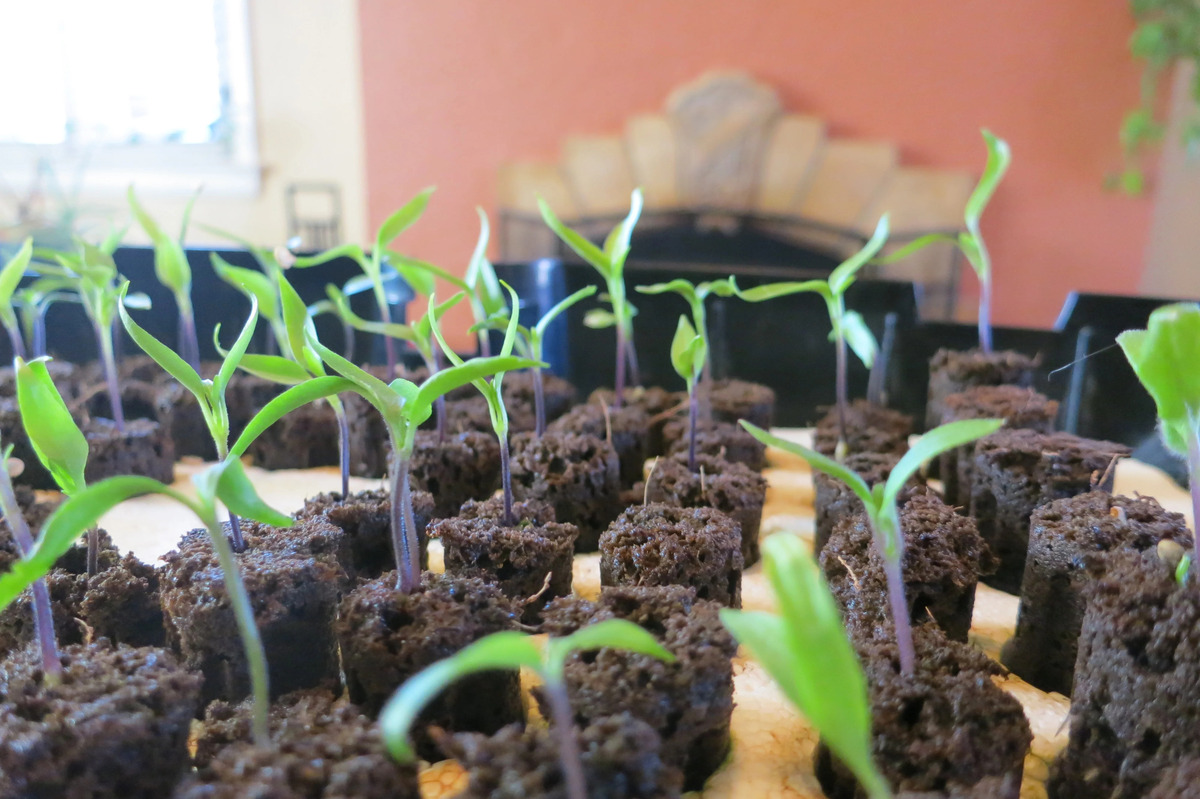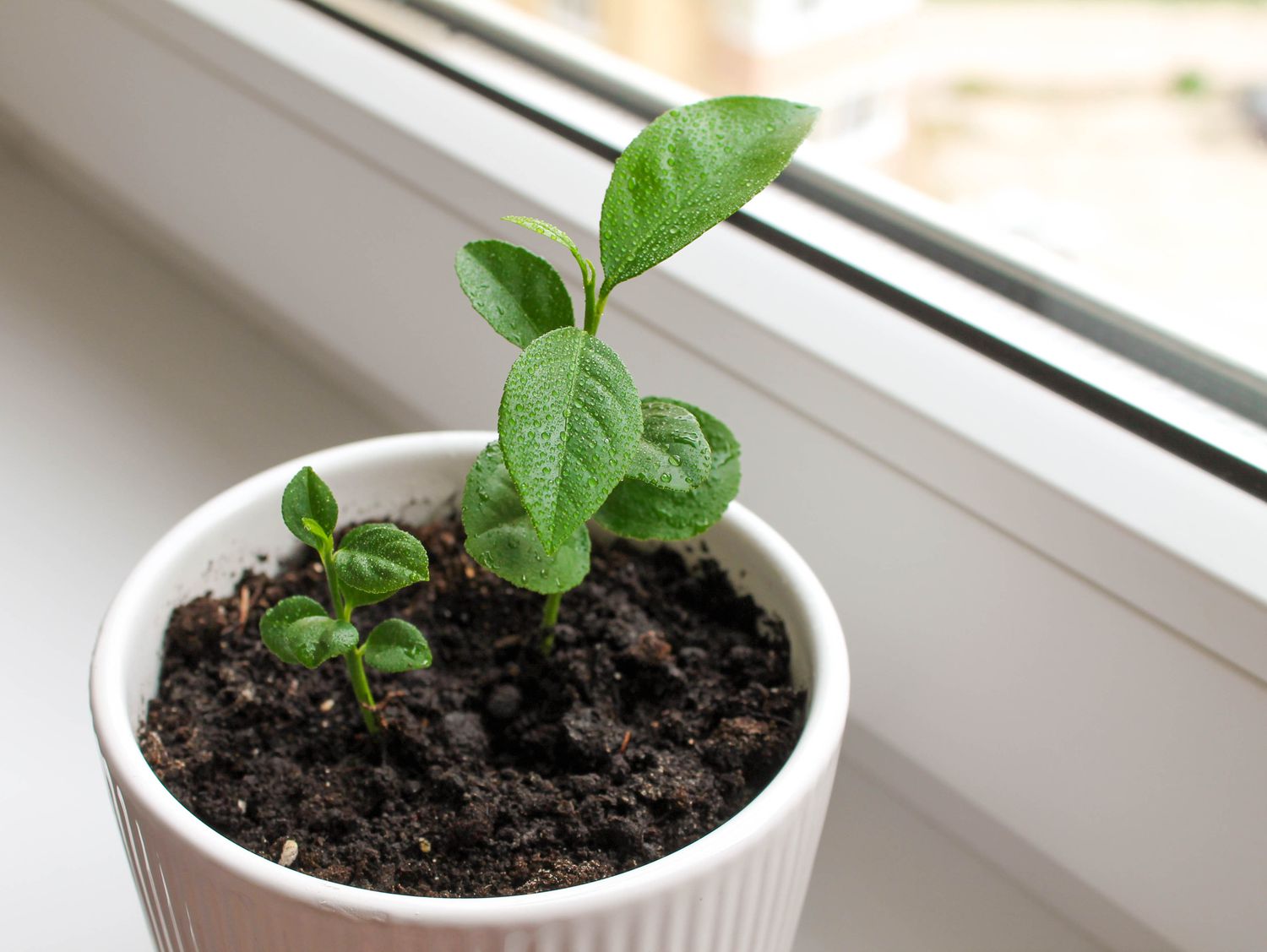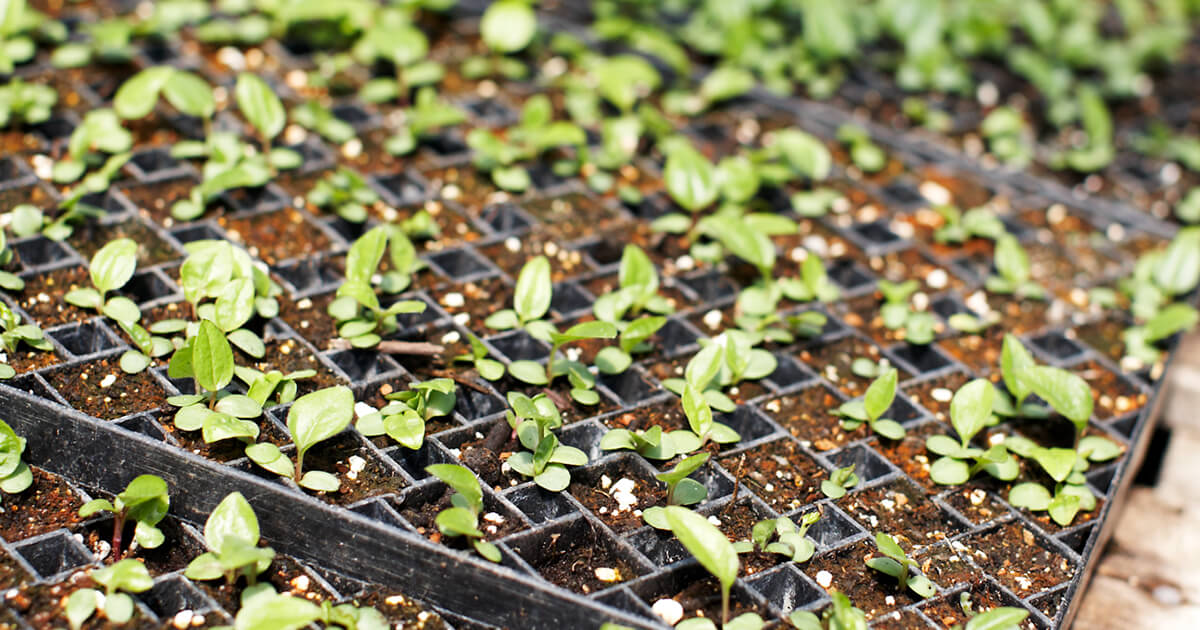Home>Types of Gardening>Edible Gardening>When To Give Seedlings Fertilizer
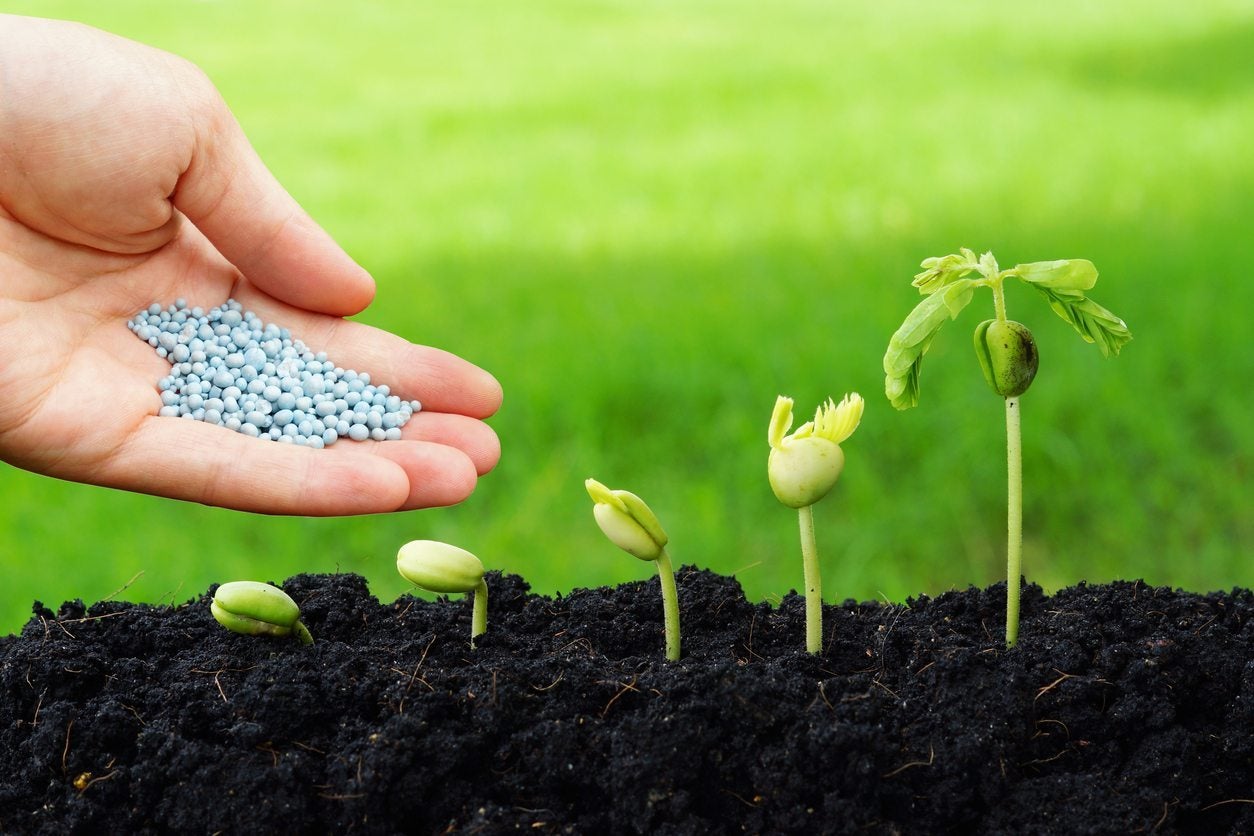

Edible Gardening
When To Give Seedlings Fertilizer
Modified: January 22, 2024
Learn when to give seedlings fertilizer in your edible gardening journey for optimal growth and harvest. Plant care tips and expert advice for successful cultivation.
(Many of the links in this article redirect to a specific reviewed product. Your purchase of these products through affiliate links helps to generate commission for Chicagolandgardening.com, at no extra cost. Learn more)
Table of Contents
- Introduction
- Understanding Seedling Nutrition
- Factors to Consider Before Fertilizing Seedlings
- Signs that Seedlings Need Fertilizer
- The Best Time to Give Seedlings Fertilizer
- Choosing the Right Fertilizer for Seedlings
- How to Apply Fertilizer to Seedlings
- Precautions and Tips for Fertilizing Seedlings
- Conclusion
Introduction
Welcome to the world of edible gardening! Whether you have a spacious backyard or a small balcony, growing your own food can be a rewarding and sustainable way to enhance your meals. One of the key factors in the success of your edible garden is giving your seedlings the right nutrition to thrive. Fertilizing your seedlings is crucial to ensure they have the necessary nutrients for healthy growth and development.
Seedlings, which are young plants that have recently germinated, are delicate and vulnerable. They rely heavily on their environment to provide them with the nutrients they need to establish strong roots, sturdy stems, and vibrant foliage. While the soil may contain some nutrients naturally, it may not provide all the essential elements in the right quantities to support optimal growth.
Understanding the importance of seedling nutrition and knowing when to give them fertilizer can make a significant difference in the success of your edible garden. In this article, we will explore the factors to consider before fertilizing seedlings, signs that indicate seedlings need fertilizer, the best time to provide them with a nutrient boost, how to choose the right fertilizer, and the proper techniques for applying it.
By gaining a deeper understanding of seedling nutrition and proper fertilization techniques, you can set your edible garden up for success and ensure a bountiful yield of fresh, healthy produce. So, let’s dive in and discover everything you need to know about when to give your seedlings fertilizer!
Understanding Seedling Nutrition
Seedlings are at a critical stage of their growth and development, and providing them with the right nutrition is essential for their overall health and vigor. As seedlings emerge from their seeds, their nutrient requirements change, and they rely on external sources for sustenance.
Essentially, seedlings need three primary macronutrients for optimal growth: nitrogen (N), phosphorus (P), and potassium (K). Nitrogen is crucial for promoting leafy green growth, phosphorus supports root development and overall plant vigor, while potassium aids in flower and fruit production.
In addition to the macronutrients, seedlings also require various micronutrients, such as iron, manganese, and zinc, in smaller amounts. These micronutrients help facilitate essential physiological processes such as enzyme activity and photosynthesis.
Aside from nutrient availability, seedling nutrition is influenced by several other factors. The pH level of the soil or growing medium is important, as it affects nutrient uptake by the roots. Most edible plants prefer a slightly acidic to neutral pH range, around 6.0 to 7.0.
Watering practices also play a role in seedling nutrition. Overwatering or underwatering can lead to nutrient imbalances or deficiencies, as excessive water can leach nutrients out of the soil or prevent their uptake by the roots. It is important to water seedlings consistently and ensure proper drainage to maintain an optimal moisture level.
Lastly, the quality of the soil or growing medium is crucial for seedling nutrition. Using a well-draining, nutrient-rich potting mix or amending the soil with organic matter can provide a solid foundation for healthy seedling growth. Organic matter, such as compost or well-rotted manure, not only adds nutrients but also improves soil structure, moisture retention, and microbial activity.
By understanding the basic nutritional needs of seedlings and the factors that influence their nutrition uptake, you can better support their growth and development. Providing the right balance of macronutrients, micronutrients, maintaining proper pH levels, practicing appropriate watering, and utilizing quality growing mediums are key steps to ensure robust and thriving seedlings.
Factors to Consider Before Fertilizing Seedlings
Before reaching for the fertilizer bag, it’s important to consider several factors that can impact the effectiveness and necessity of fertilizing your seedlings. Understanding these factors will help you make informed decisions and avoid any potential harm to your delicate plants.
1. Seedling age: The age of your seedlings plays a significant role in determining when and how much fertilizer they need. Younger seedlings, just emerging from the soil, generally do not require fertilizer immediately. Instead, they rely on the nutrients stored in the seed for their initial growth. As they mature and develop their first true leaves, they will start to benefit from external sources of nutrition.
2. Nutrient-rich soil or growing medium: If you have prepared your planting area or containers with nutrient-rich soil or growing medium, your seedlings may not require additional fertilizer right away. High-quality potting mixes or well-amended garden soil usually provide enough nutrients to sustain seedling growth for the first few weeks. However, as the growing season progresses, these nutrients may become depleted, and supplemental fertilization may be needed.
3. Slow-release fertilizers: When considering fertilizer options for your seedlings, slow-release fertilizers can be beneficial. These types of fertilizers gradually release nutrients over an extended period, providing a steady and consistent supply of nutrition to the plants. This can be particularly advantageous for delicate seedlings, as it minimizes the risk of nutrient burn or excessive nutrient uptake.
4. Organic vs. synthetic fertilizers: Another factor to consider is the type of fertilizer you are using. Organic fertilizers, derived from natural sources, are often preferred for edible gardening as they promote soil health and microbial activity. They provide a slow-release of nutrients and improve the overall fertility of the soil. Synthetic fertilizers, on the other hand, deliver nutrients more quickly but may lack the long-term benefits associated with organic options.
Signs that Seedlings Need Fertilizer
Knowing when your seedlings need fertilizer is crucial to ensuring they receive the necessary nutrients for healthy growth. Keep an eye out for these signs that indicate your seedlings may benefit from a nutrient boost:
1. Slow or stunted growth: If your seedlings are growing at a slower pace than expected or appear stunted compared to others of the same age, it may be a sign that they are lacking essential nutrients. Nitrogen deficiency, for example, can result in stunted growth and pale yellow or light green leaves.
2. Pale or discolored leaves: Seedlings with pale or yellowing leaves may be experiencing a nutrient deficiency. This can be a sign of nitrogen, iron, or magnesium deficiency. Nitrogen deficiency often presents as overall yellowing of the leaves, while iron deficiency leads to pale green or yellow leaves with dark green veins. Magnesium deficiency can cause yellowing along the edges of the leaves.
3. Weak stems or floppy seedlings: Insufficient nutrients, particularly phosphorus, can lead to weak or floppy seedlings. Phosphorus deficiency affects the strength and rigidity of the stems, making the seedlings prone to bending or falling over.
4. Delayed or lack of flowering: If your seedlings are not producing flowers or showing delayed flowering, it could be due to a lack of potassium, phosphorus, or other essential nutrients. Potassium is particularly important for flower and fruit production.
5. Nutrient deficiencies in older leaves: Some nutrient deficiencies may manifest in the older leaves of the seedlings first. For example, magnesium deficiency often affects the lower leaves, causing them to turn yellow or develop brown spots.
6. Overall weak or unhealthy appearance: If your seedlings have a generally weak or unhealthy appearance, including wilting, curling leaves, or overall poor vigor, it may indicate a lack of essential nutrients. A comprehensive nutrient deficiency can affect the overall health and vitality of the seedlings.
It is important to note that while these signs can indicate a need for fertilizer, they can also be symptoms of other environmental or cultural issues. Therefore, it is essential to assess and eliminate other potential causes before concluding that your seedlings require fertilizer.
Observing and identifying these signs early on can help you intervene and provide the necessary nutrients to support the healthy growth and development of your seedlings.
The Best Time to Give Seedlings Fertilizer
Timing is crucial when it comes to fertilizing seedlings. Giving them fertilizer at the right time ensures that they receive the nutrients they need at the most appropriate stage of their growth. Here are some guidelines to help you determine the best time to fertilize your seedlings:
1. Wait until the seedlings have established: It is generally recommended to allow your seedlings to establish a strong root system and develop their first true leaves before introducing fertilizer. This is because the initial stages of growth mainly rely on the nutrients stored in the seed itself. Fertilizing too early can overwhelm the delicate roots and lead to nutrient burn.
2. Start fertilizing after 2-4 weeks: Once your seedlings have developed a healthy root system and their first true leaves, it is typically safe to start fertilizing. This is usually around 2-4 weeks after germination. By this time, the nutrients from the seed are beginning to deplete, and the seedlings can benefit from external sources of nutrition.
3. Provide gradual nutrient supplementation: When applying fertilizer to seedlings, it is best to start with diluted or weaker concentrations and gradually increase the strength over time. This helps prevent overfeeding or shocking the seedlings with excessive nutrients. Gradual nutrient supplementation allows the seedlings to adjust and absorb nutrients in a controlled manner.
4. Consider the growth stage: As your seedlings continue to develop, their nutrient needs change. Pay attention to the specific growth stage of your seedlings, such as when they start to produce flowers or set fruit. These stages often require an extra boost of phosphorus or potassium to support flower and fruit development. Adjust your fertilizer application accordingly to meet the evolving needs of the seedlings.
5. Extend fertilization throughout the growing season: Fertilizing seedlings is not a one-time affair. It is important to continue providing them with nutrients throughout the growing season. As your plants grow, their nutrient requirements increase, and regular fertilization ensures they have a continuous supply of essential elements. Consider implementing a fertilization schedule to maintain consistent nutrient availability.
Remember, it is always better to under-fertilize than over-fertilize your seedlings. Overdoing it can lead to nutrient toxicity, root burn, or other adverse effects. It is essential to follow the instructions on the fertilizer package and adjust the application rates based on the specific needs of your seedlings and the conditions of your garden.
By fertilizing seedlings at the right time and providing them with a gradual and appropriate nutrient supplementation, you can support their healthy growth and maximize their potential for a successful harvest.
Choosing the Right Fertilizer for Seedlings
When it comes to fertilizing seedlings, selecting the right fertilizer is crucial to provide them with the necessary nutrients for optimal growth and development. Here are some factors to consider when choosing the best fertilizer for your seedlings:
1. Nutrient composition: Look for a fertilizer that is specifically formulated for seedlings or young plants. These formulations generally have a balanced nutrient composition, providing the necessary macronutrients (nitrogen, phosphorus, potassium) and micronutrients in appropriate ratios. The ideal ratio for seedlings is often represented as N-P-K (nitrogen-phosphorus-potassium) on the fertilizer package label.
2. Slow-release vs. water-soluble fertilizers: Consider whether you prefer a slow-release or water-soluble fertilizer for your seedlings. Slow-release fertilizers gradually release nutrients over time, providing a steady and consistent supply. They are convenient and require less frequent application. On the other hand, water-soluble fertilizers allow for more control over nutrient intake and are quickly absorbed by the seedlings. Choose the type that aligns with your gardening style and preferences.
3. Organic vs. synthetic fertilizers: Decide whether you want to use organic or synthetic fertilizers. Organic fertilizers are derived from natural sources and promote long-term soil health. They release nutrients slowly and improve soil structure and microbial activity. Synthetic fertilizers, on the other hand, deliver nutrients more quickly and are often more concentrated. Choose based on your gardening philosophy and desired environmental impact.
4. pH considerations: Check the pH level of the fertilizer you are considering. Most edible plants prefer a slightly acidic to neutral pH range, around 6.0 to 7.0. Ensure that the fertilizer’s pH aligns with the preferred pH range of your seedlings to facilitate optimal nutrient uptake.
5. Consider granular or liquid formulations: Fertilizers come in different forms, such as granular or liquid. Granular fertilizers are easy to apply and provide a slow-release of nutrients. They are suitable for incorporating into the soil or top-dressing around seedlings. Liquid fertilizers, on the other hand, are quickly absorbed by the plants and can be applied through foliar spraying or incorporated into the watering routine. Choose based on your convenience and the specific needs of your seedlings.
6. Avoid excessive fertilization: Remember that seedlings are delicate, and over-fertilization can harm them. It is better to err on the side of caution and slightly under-fertilize rather than over-fertilize. Follow the instructions on the fertilizer package carefully and start with a lower concentration, gradually increasing it as necessary. Monitor the growth and appearance of your seedlings to ensure they are not showing signs of nutrient burn or toxicity.
Ultimately, choosing the right fertilizer for your seedlings involves considering their nutrient needs, your gardening practices, and your personal preferences. Select a fertilizer that provides the necessary nutrients, aligns with your gardening philosophy, and supports the long-term health and vitality of your seedlings.
How to Apply Fertilizer to Seedlings
Applying fertilizer to seedlings requires careful attention to ensure proper nutrient absorption and minimize any potential harm. Here are some steps to follow when applying fertilizer to your seedlings:
1. Dilute the fertilizer: If you are using a concentrated liquid fertilizer, dilute it according to the instructions on the package. It is important to avoid using the fertilizer at full strength, especially for young and delicate seedlings. Diluting the fertilizer ensures that it is not too concentrated and reduces the risk of nutrient burn or overfeeding.
2. Water the seedlings: Before applying the fertilizer, give your seedlings a thorough watering. This helps moisten the soil or growing medium and prepares the roots for nutrient uptake. Adequate moisture ensures that the fertilizer can be easily absorbed by the roots and distributed throughout the plant.
3. Apply the fertilizer: There are two common methods for applying fertilizer to seedlings: top-dressing and foliar spraying.
– Top-dressing: For granular or slow-release fertilizers, sprinkle the appropriate amount of fertilizer around the base of each seedling, avoiding direct contact with the stem. Gently work the fertilizer into the top layer of soil or growing medium, ensuring that it is evenly distributed. Water the seedlings lightly after applying the fertilizer to help it settle into the soil.
– Foliar spraying: Liquid fertilizers can be applied as a foliar spray. Mix the fertilizer according to the package instructions and transfer it to a spray bottle. Lightly mist the foliage of the seedlings, being careful not to oversaturate or cause excessive dripping. Foliar spraying allows for direct nutrient absorption through the leaves, providing a quick boost of nutrition.
4. Water after application: After applying the fertilizer, water the seedlings again. This helps wash any fertilizer residue off the leaves and ensures that the nutrients reach the root zone. Adequate watering also prevents any potential buildup of salts from the fertilizer, which can be harmful to the seedlings.
5. Monitor the seedlings: Keep a close eye on your seedlings after applying the fertilizer. Monitor their growth and appearance to assess their response to the nutrient boost. Look out for signs of overfertilization, such as leaf burn or wilting, and adjust your fertilization practices accordingly.
6. Follow a fertilization schedule: Establish a fertilization schedule to provide regular and consistent nutrient supplementation to your seedlings. This ensures a continuous supply of necessary nutrients throughout their growth. However, be mindful of not overfertilizing and provide adequate periods of rest between fertilizations to prevent nutrient buildup.
By applying fertilizer correctly and following these steps, you can effectively provide your seedlings with the necessary nutrients for healthy and robust growth. Taking proper care during the fertilization process contributes to the overall success of your seedlings and helps set the stage for a thriving edible garden.
Precautions and Tips for Fertilizing Seedlings
Fertilizing seedlings requires attention to detail and adherence to certain precautions to ensure the health and success of your plants. Here are some important precautions and tips to keep in mind when fertilizing your seedlings:
1. Start with a balanced fertilizer: Choosing a balanced fertilizer with equal proportions of nitrogen (N), phosphorus (P), and potassium (K) is a good starting point for most seedlings. This ensures that they receive a well-rounded mix of nutrients without risking an imbalance that could harm their growth.
2. Follow package instructions: Always follow the instructions provided on the fertilizer packaging. This includes the recommended application rates, dilution ratios (if applicable), and frequency of application. Over-fertilizing can lead to nutrient toxicity and harm your seedlings.
3. Avoid fertilizing stressed seedlings: Do not fertilize seedlings that are already stressed due to factors such as drought, pest infestation, or disease. It is important to focus on resolving the underlying issues causing the stress before introducing fertilizer. Stressed plants may have difficulty absorbing and utilizing nutrients effectively.
4. Water adequately: Proper watering is crucial before and after fertilization. Ensure that the seedlings are well-hydrated before applying fertilizer to prevent root damage. After fertilization, water the seedlings lightly to help the nutrients settle into the soil and minimize the risk of nutrient burn. Keep the soil consistently moist to facilitate nutrient uptake.
5. Respect timing and frequency: Be mindful of the recommended timing and frequency of fertilizer application. Follow a fertilization schedule, taking into account the growth stage of your seedlings. Applying fertilizer too frequently or at the wrong time can lead to excessive nutrients or nutrient imbalances, affecting the overall health of the plants.
6. Consider organic alternatives: If you prefer a more organic approach, consider using natural alternatives, such as compost tea or organic fertilizers. These options provide slow-release nutrients and promote soil health, supporting the long-term growth and vitality of your seedlings.
7. Monitor for signs of overfertilization: Keep a close eye on your seedlings for any signs of nutrient burn or overfertilization. Symptoms may include leaf scorching, discoloration, wilting, or stunted growth. If these signs occur, discontinue fertilization and flush the soil with water to leach out excess nutrients.
8. Adjust fertilization based on soil conditions: Soil composition and fertility can vary greatly, even within the same garden. Consider conducting a soil test to determine nutrient levels and pH. This information can help you adjust your fertilization practices accordingly and address any specific nutrient deficiencies or imbalances.
9. Keep records: Maintain records of your fertilization practices, including the type of fertilizer used, application rates, and dates. This record-keeping helps you track the effectiveness of different fertilizers, adjust your fertilization routine, and plan for future growth seasons.
Fertilizing seedlings should be approached with care and attention to detail. By taking precautions and following these tips, you can ensure that your seedlings receive the right amount of nutrients to promote healthy growth and development, setting the stage for a thriving edible garden.
Conclusion
Fertilizing seedlings is a crucial step in ensuring their healthy growth and development. By understanding seedling nutrition and the factors that influence it, you can make informed decisions about when and how to fertilize your plants. Observing signs of nutrient deficiency, knowing the best time to fertilize, and choosing the right fertilizer are all essential aspects of successful seedling care.
Remember to consider the age of the seedlings, the quality of the soil or growing medium, and the specific nutrient requirements of your plants. Take precautions to avoid over-fertilization and provide gradual nutrient supplementation to prevent harm to the seedlings.
Applying fertilizer correctly, whether through top-dressing or foliar spraying, and watering appropriately after application are key steps in ensuring effective nutrient absorption. By following a fertilization schedule and observing your seedlings closely for signs of nutrient deficiencies or overfertilization, you can adjust your practices as needed.
Finally, always keep in mind the importance of soil health, proper watering, and adequate drainage for optimal nutrient uptake by your seedlings. Consistency, patience, and attention to detail are key to maintaining a healthy and thriving edible garden.
By implementing these guidelines and monitoring the growth of your seedlings, you can provide them with the necessary nutrients for robust development and poised them for a successful and rewarding harvest.


